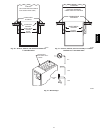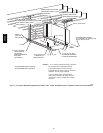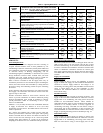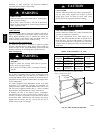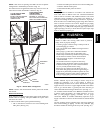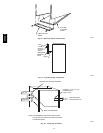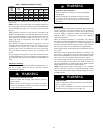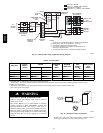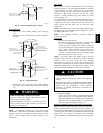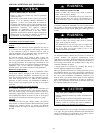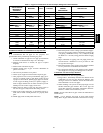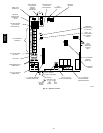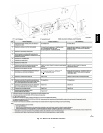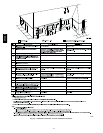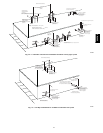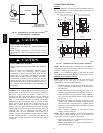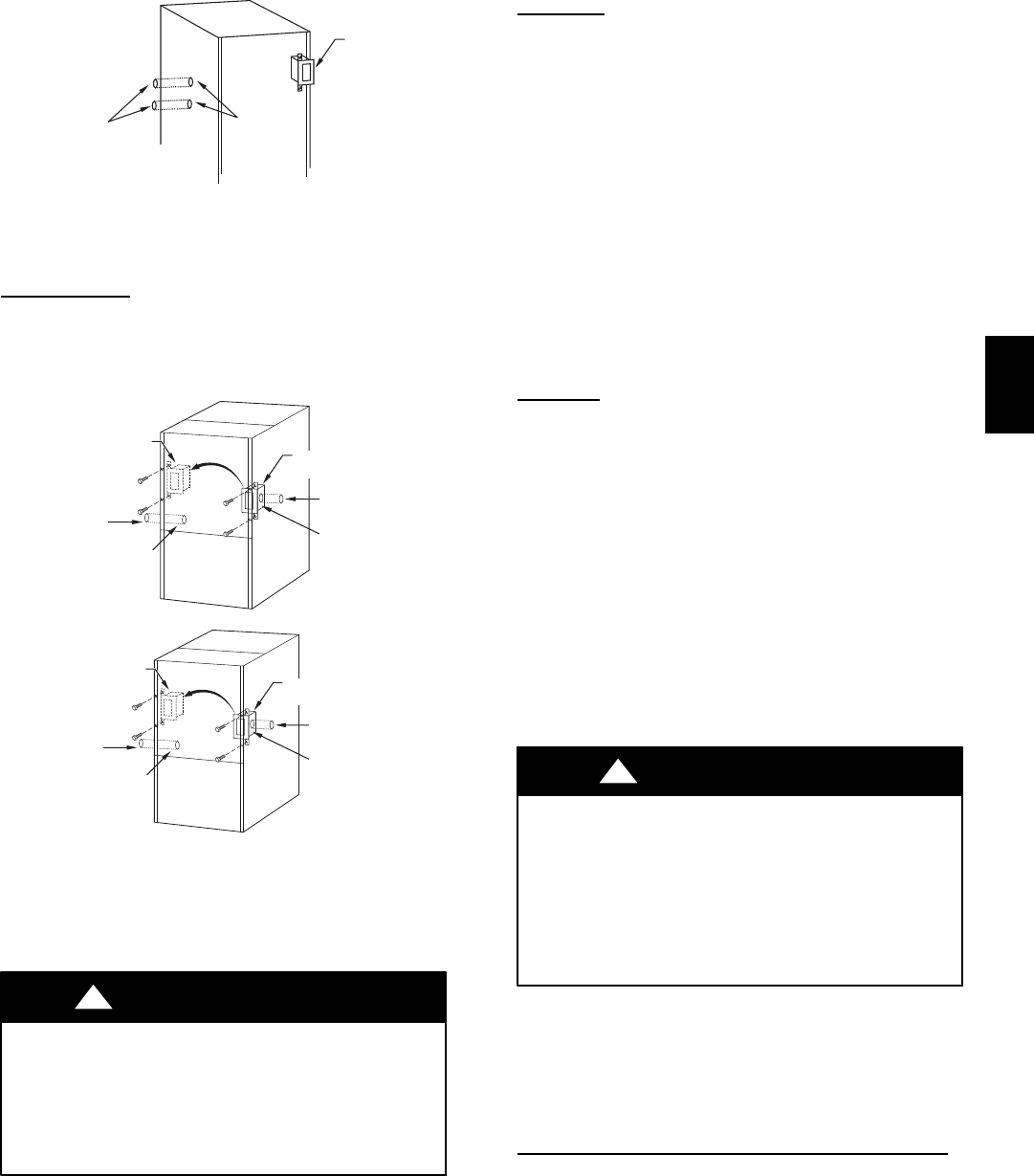
27
FACTORY
INSTALLED
LOCATION
UNUSED 7/8-IN. (22 mm)
DIAMETER POWER
ENTRY HOLES
POWER ENTRY HOLE
FILLER PLUG (FACTORY-
SUPPLIED LOOSE PARTS BAG)
A05113
Fig. 31 -- Factory Installed J--Box Location
J--Box
Relocation
1. Remove two screws holding auxiliary J--box. (See Fig.
32.)
2. Rotate J--box 180_ and attach box to left side, using holes
provided.
FACTORY
INSTALLED
LOCATION
ALTERNATE
FIELD
LOCATION
POWER ENTRY HOLE
FILLER PLUG (FACTORY-
SUPPLIED LOOSE PARTS BAG)
UNUSED 7/8-IN. DIAMETER
POWER ENTRY HOLES
UNUSED 7/8-IN. DIAMETER
POWER ENTRY HOLES
POWER ENTRY HOLE
FILLER PLUG (FACTORY-
SUPPLIED LOOSE PARTS BAG)
FACTORY
INSTALLED
LOCATION
ALTERNATE
FIELD
LOCATION
POWER ENTRY HOLE
FILLER PLUG (FACTORY-
SUPPLIED LOOSE PARTS BAG)
UNUSED 7/8-IN. (22 mm) DIAMETER
POWER ENTRY HOLES
UNUSED 7/8-IN. (22 mm) DIAMETER
POWER ENTRY HOLES
POWER ENTRY HOLE
FILLER PLUG (FACTORY-
SUPPLIED LOOSE PARTS BAG)
A05058
Fig. 32 -- J--Box Relocation
3. Install power entry hole filler plugs (factory--supplied
loose parts bag) in unused power entry holes. (See Fig.
31.)
FIRE OR ELECTRICAL SHOCK HAZARD
Failure to follow this warning could result in personal
injury, death, or property damage.
If manual disconnect switch is to be mounted on furnace,
select a location where a drill or fastener w ill not contact
electrical or gas components.
!
WARNING
NOTE: If modulating dampers are used, blower motor
automatically compensates for modulating dampers. If manual
disconnect switch is to be mounted on furnace, select a location
where a drill or fastener will not contact electrical or gas
components.
24-- v
wiring
Make field 24--v thermostat connections at 24--v t erminal block
on furnace control. Y wire from thermostat MUST be connected
to Y/Y2 terminal on control, as shown in Fig. 19, for proper
cooling operation. The 24--v terminal block is marked for easy
connection of field wiring. (See Fig. 33.) The 24 --v circuit
contains a 3--amp, automotive--type fuse located on furnace
control. (See Fig. 33.)
Any electrical shorts of 24--v wiring during installation, service,
or maintenance may cause fuse to blow. If fuse replacement is
required, use only a fuse of identical size (3 amp) and type. The
furnace control will flash status code 24 when fuse needs
replacement.
NOTE: Use AWG No. 18 color--coded copper thermostat wire
for lengths up to 100 ft. (30.4M). For wire lengths over 100 ft.,
(30.4M) use AWG No. 16 wire.
NOTE: For additional thermostat connection diagrams,
reference Fig. 52--59.
Accessories
1. Electronic Air Cleaner (EAC)
The furnace control EAC terminals are energized with
115v (1.0 --amp maximum) during blower operation.
Connect an accessory Electronic Air Cleaner (if used) us-
ing 1/4--in. female quick connect terminals to the two male
1/4--in. quick-- connect terminals on the control board
marked EAC--1 and EAC--2. The terminals are rated for
115VAC, 1.0 amps maximum and are energized during
blower motor operation. (See Fig. 33.)
NOTE: L ow stage airflow may s lightly increase the trace
amount of ozone created by an electronic air cleaner. Individual
sensitivity levels to ozone, along with other operating
characteristics of electronic air cleaners may affect the amount
noticed by an individual. Refer to the air cleaner manufacturer’s
installation instructions for more information regarding ozone
and ozone reduction methods available for your air cleaner.
UNIT DAMAGE HAZARD
Failure to follow this caution may result in unit component
damage.
DO NOT connect furnace control HUM terminal to HUM
(humidifier) terminal on Thermidistatt, Zone Controller or
similar device. See Thermidistatt, Zone Controller,
thermostat, or c ontroller manufacturer’s instructions for
proper connection.
CAUTION
!
2. Hu midifier (HUM)
Connect an accessory 24 VAC, 0.5 amp maximum humid-
ifier (if used) to the 1/4-- in. male quick -- connect HUM ter-
minal and COM--24V screw terminal on the control board
thermostat strip. The HUM terminal is ener gized when
blower is energized in heating. (See Fig. 33.)
Removal of Existing Furnaces from Common Vent
Systems
When an existing Category I furnace is removed or replaced, the
original venting system may no longer be sized to properly vent
the remaining attached appliances. An improperly sized Category
I venting system could cause the formation of condensate in the
furnace and vent, leakage of condensate and combustion
products, spillage of combustion products into the living space,
etc.
355CAV



